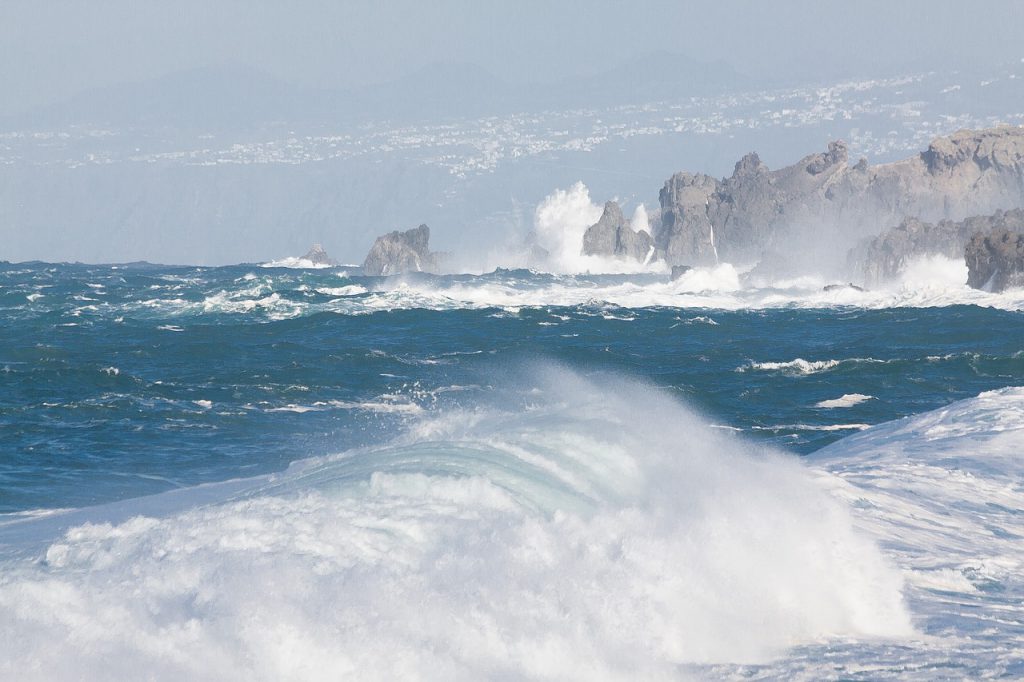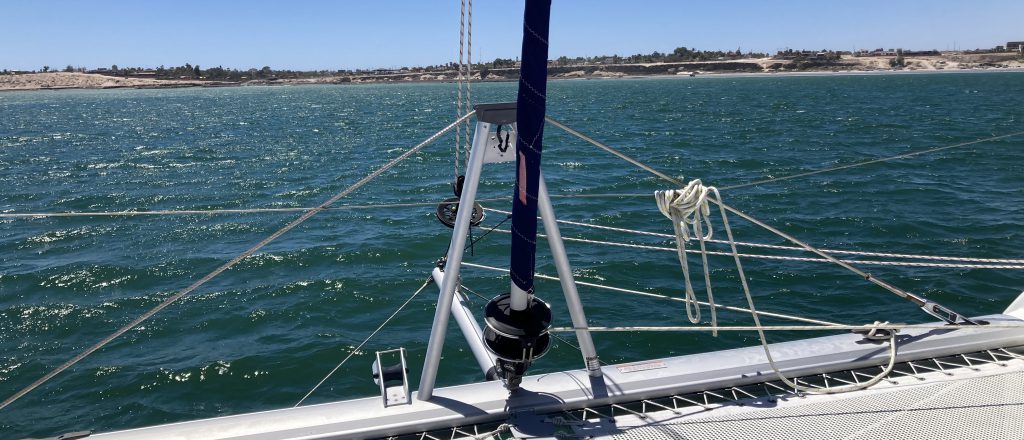Sailing is a thrilling adventure, but as wind speeds increase, your vessel gets overpowered. That’s when it becomes crucial to manage your sails effectively in order to keep the boat and your crew safe. Reefing is the term used to refer to reduce sail area for strong winds. In this article I’ll layout what you need to know about reefing, including when to reef, how to do it, common mistakes to avoid, and tips for reefing on a catamaran or trimaran.
What is Reefing?
Reefing is the process of reducing the area of a sail in response to increasing wind speeds. By reefing, sailors can maintain control of the boat and prevent the sails from overpowering the vessel.

When to Reef
I don’t know about you but I enjoy it when we are heeled over on a monohull, however, the truth is that the boat is less efficient when it’s heavily heeled, and your rigging is under extra strain, which can lead to costly problems. Excessive heeling can also be uncomfortable for your passengers, possibly inducing seasickness. If your boat is heeling excessively, it’s a sign that you probably should reef.
If you are experiencing “weather helm” (it’s challenging to control the wheel or tiller and/or keep your boat on course), reefing can improve control.
As a general rule, it’s a good idea to reef when the wind reaches around 15-20 knots, depending on your boat’s size and design, and modern boats will often have specific manufacturer recommendations about when to reef. You’ll want to be familiar with these recommendations for catamarans and trimarans as they will not heel nearly as much as a monohull, so you can unknowingly put extra strain on your sailboat.
How to Reef with typical sails (sails that raise/lower as opposed to furling)
1. Prepare the Boat: Ensure all crew members are wearing safety gear and are prepared for the maneuver. You may want to heave to if you are unfamiliar with the reefing system you are working with.
2. Lower the Sail: Ease the halyard to lower the sail just a little lower than the desired reefing point.
3. Secure the Reef Points: Attach the reefing lines to the sail at the designated reef points and tighten them to secure the sail. It should be noted that there are multiple ways reefs can be secured and it is important to understand how the reefing system works on any boat you are going to be on, before you shove off. If wind predictions show that you are likely to need to reef, it is better to do it at the dock in most cases.
4. Raise the Sail: Hoist the sail back up, ensuring it is properly tensioned and secured.

How to Reef with furled sails
Some sails will have marks on the sail showing recommended reef points. This is most common on head sails (jib or genoa), but I have seen these on mainsails that furl. These can be a vertical line or large colored dots.

How to Know When to Reef a Catamaran or Trimaran
• Sail Area: Catamarans and trimarans typically have a larger sail area relative to their size compared to monohull boats. As a result, they may need to be reefed earlier in higher wind speeds.
• Windward Performance: If your catamaran or trimaran is struggling to maintain a course into the wind, it may be time to reef to reduce sail area and improve windward performance.
Common Mistakes to Avoid
• Waiting Too Long: Reefing early is better than waiting until it’s too late. It’s easier to shake out a reef than to reef in a hurry.
• Improperly Securing Reef Points: Ensure that the reefing lines are properly attached and tensioned to avoid flapping sails or damage.
• Over- or Under-Reefing: Follow the guidelines for reefing based on wind conditions. Under-reefing can lead to excessive heeling and strain on the vessel, while over-reefing can reduce sail efficiency.
Reefing in Different Conditions
• Heavy Weather: In strong winds and rough seas, it’s essential to reef early and often to maintain control and prevent damage to the sails and rigging.
• Light Winds: Even in light winds, it may be necessary to reef to prevent excessive heeling and maintain a comfortable sailing experience.
Maintenance and Care
Regularly inspect your reefing gear for wear and tear. Clean and lubricate the reefing lines and hardware to ensure smooth operation when reefing is required.
Mastering the art of reefing is essential for any sailor looking to sail safely and comfortably in varying wind conditions. By knowing when to reef, how to do it, and common mistakes to avoid, you can ensure that you’re always prepared to handle whatever the wind and sea throw your way.
Fair Winds
Captain Jeff Vegas
Watch video testimonials for Captain Jeff Vegas by clicking this link
 Terms of Use
Terms of Use
Leave a Reply